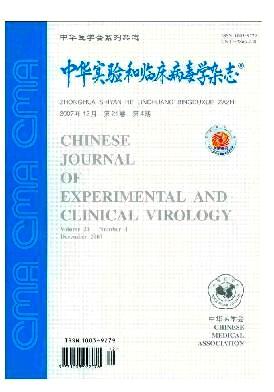[Establishment of localization ultrathin section for cytopathic cells].
中华实验和临床病毒学杂志
Pub Date : 2013-10-01
引用次数: 0
Abstract
Objective: To establish a localization ultrathin section method through which target cytopathic cells could be sectioned in situ.
Methods: Lab-Tek Chamber slide system (177402) was selected as resin embedding mould. Cells infected with Human adenovirus type 5 (Ad5) or A/HN/SWL3/ 2009 (H1N1) influenza virus were embedded in situ as models. Target cytopathic cells were exposed by trimming, sectioned and observed under transmission electron microscope (TEM).
Results: Target cells could be sectioned in situ and virus particles could be found easily on sections.
Conclusion: A localization ultrathin sectioning method was established and this technique could be applied in virus detection in cytopathic cells to improve TEM detection efficiency.
【细胞病变细胞定位超薄切片的建立】。
目的:建立一种原位切片靶细胞病变细胞的定位超薄切片方法。方法:选用Lab-Tek Chamber玻片系统(177402)作为树脂包埋模。将感染人腺病毒5型(Ad5)或甲型H1N1流感病毒(A /HN/SWL3/ 2009)的细胞原位包埋作为模型。对目标病变细胞进行切边、切片、透射电镜观察。结果:靶细胞能原位切片,切片上容易发现病毒颗粒。结论:建立了一种定位超薄切片方法,该技术可用于细胞病变细胞的病毒检测,提高了TEM检测效率。
本文章由计算机程序翻译,如有差异,请以英文原文为准。
求助全文
约1分钟内获得全文
求助全文

 求助内容:
求助内容: 应助结果提醒方式:
应助结果提醒方式:


